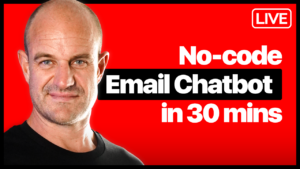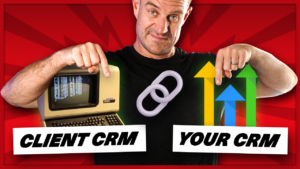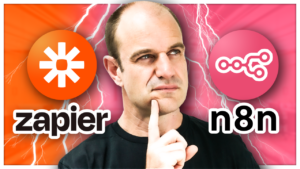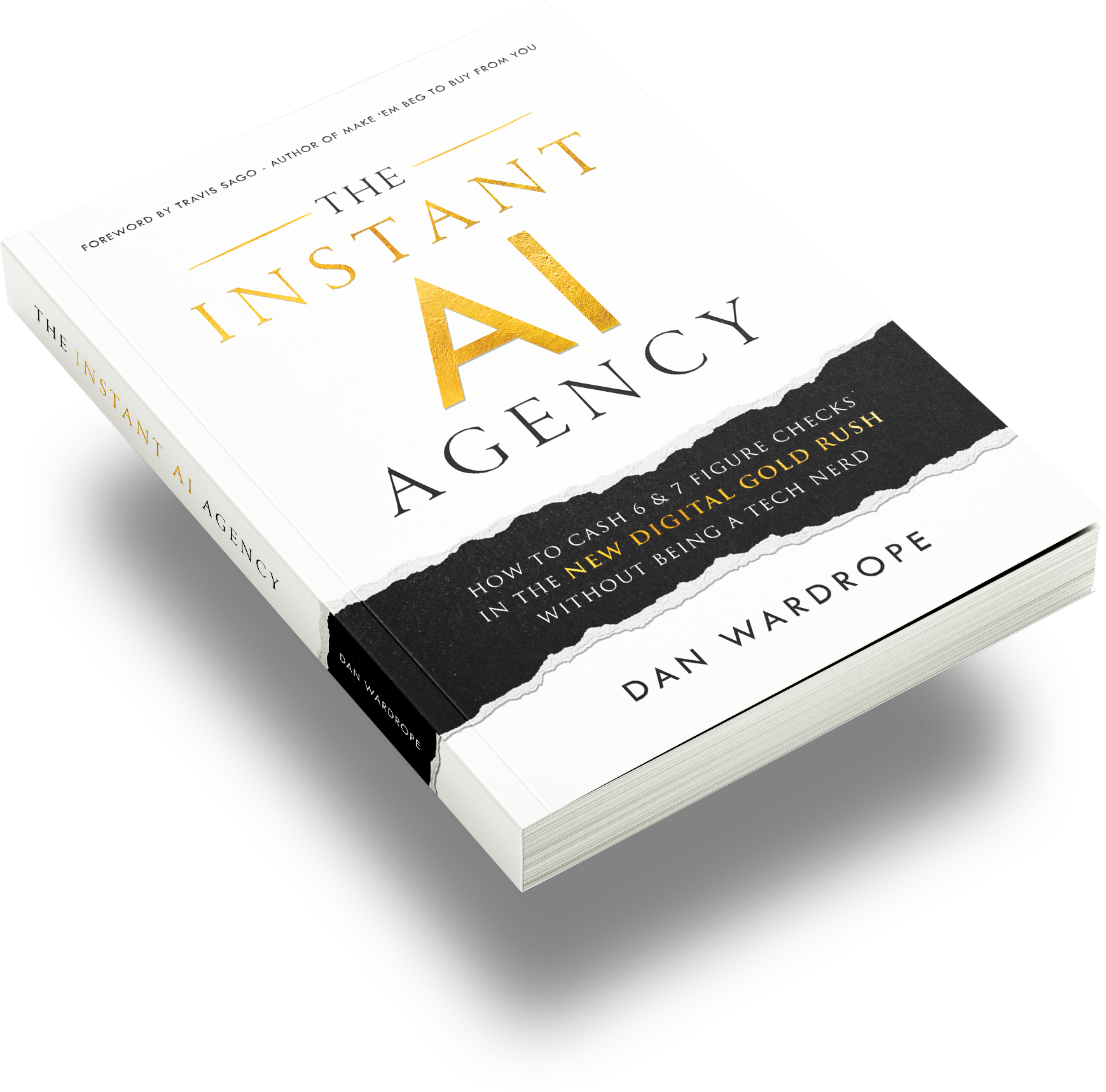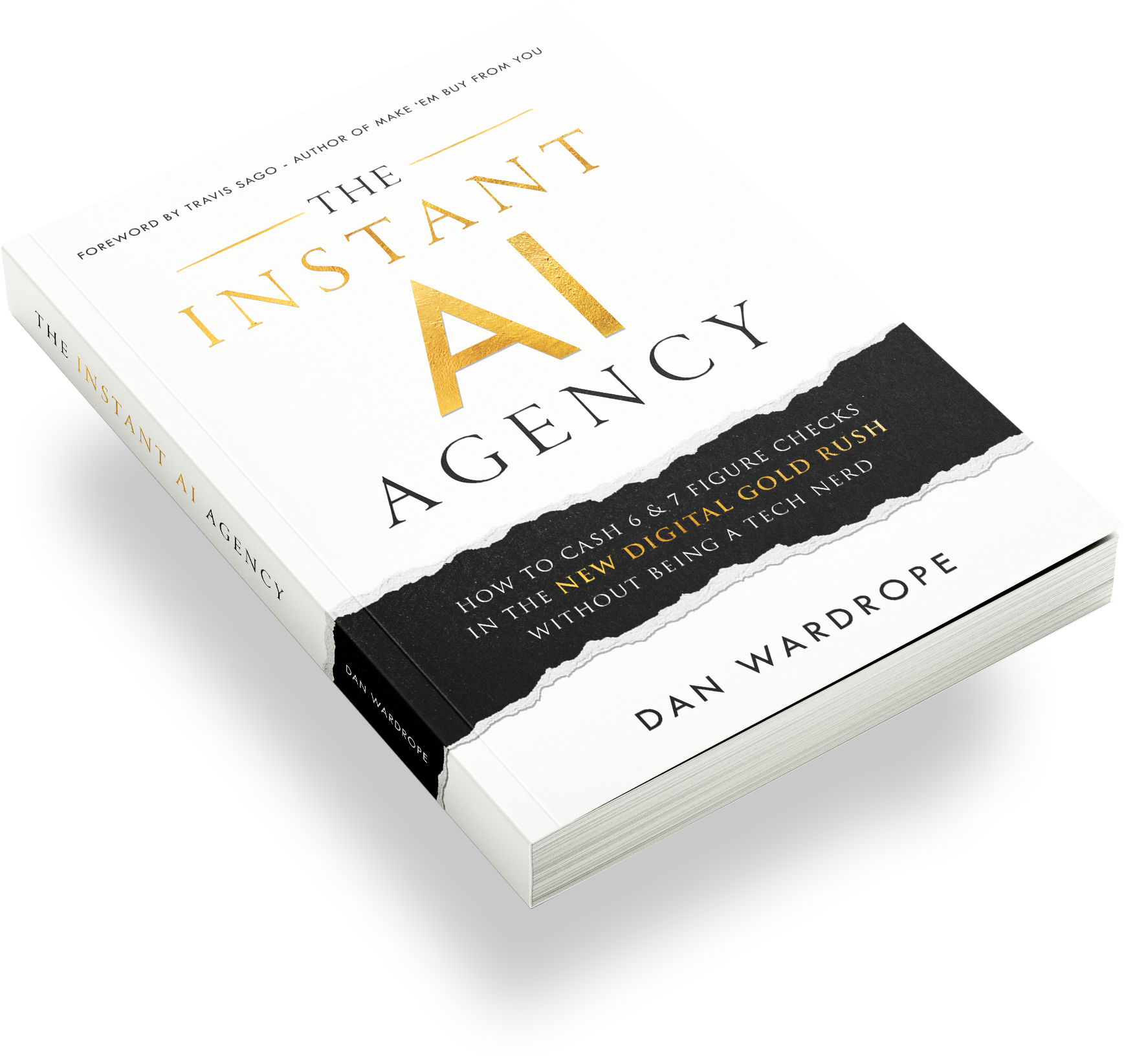Happy holidays, everyone!
Full of good cheer, it’s time to run through the last twelve months and summarise what Flexxable’s learned in 2019.
So, let’s get started.
1. We’ve Had A Lot of Ups and Downs With Facebook
This year has certainly thrown some curveballs my way – especially when it comes to Facebook.
Over the last six months (or more, to be honest), Facebook has been a total pain in the ass.
People across the globe have been having their ad accounts banned, and business owners are now suspecting the worst: that Facebook advertising is dying.
You’ll see in some of my previous posts that I fiercely defend Facebook.
Truth is, I still think that Facebook advertising has its place for marketers. Taken from a Mashable study, Facebook is still the most-used social media platform in 2019.
The stats are as follows:
- 52% of internet users aged 12+ use Facebook the most
- 16% of users aged 12+ visit Instagram the most
- 13% visit Snapchat the most
- 5% use Pinterest
- 5% use Twitter
Though it’s becoming more of a “mum and dad” platform, Facebook still has 2.38 billion active users, meaning there are still enormous opportunities for targeting the right audiences.
Some businesses have complained that Facebook has reduced its targeting options. This is true. In March 2018, the Cambridge Analytica scandal came to a head, when an ex-employee was persuaded to act as a whistleblower.
This, along with a more recent complaint filed by the U.S. Department of Housing and Development, meant Facebook was forced to remove 5000 ad targeting options. HUD argued that Facebook’s ad settings enabled the discrimination of certain races, religions, sexualities and national origins.
Facebook admitted that, though these options were usually used for legitimate reasons, minimising the risk of discrimination was more critical.
However, Facebook still isn’t actively trying to make marketers’ lives a misery. These 5000 removed targeting options mostly affect the housing, employment and credit sectors.
People advertising outside niches can still target audiences according to:
- Age
- Location
- Languages
- Gender
- Relationship status
- Work
- Education
- Generation
- Interests
And much more.
Facebook Problems
That said, I’ve got to admit that Facebook’s been a little trigger happy with the banned ad accounts this year.
Facebook bans ad accounts if you’ve built a substantial pile of denied adverts, or if your ads receive more complaints, “hide posts” or angry reactions than average.
Of course, if your ads are repeatedly being disapproved, it may be a good idea to look at your creative before your account is swept away from you.
And don’t leave it too late. Once the mark against you is too big to ignore, Facebook will start to disapprove your ads no matter how good they are.
A banned ad account means you’ll have to make a new one in Business Manager and set up a payment method. In some cases, you may have to create a new Facebook page.
If you’re advertising from your personal account (which I don’t recommend), you may have to set up a new ad account via a friend or colleague. A personal ad account ban can mess up your landing pages too – as well as who “officially” has control of the new page. The stakes are so high with personal ad accounts, you should do everything in your power not to violate Facebook’s terms of service.
Likewise, if you have a Business Manager that’s full of banned ad accounts, Facebook’s going to take this as a big red flag. Your ads may get repeatedly rejected, even if they stick rigidly to Facebook’s policy.
If nothing works, it may be time for a rebrand. That means new ads, a new ad account, a fresh Facebook page and a new URL to a landing page (so Facebook doesn’t recognise it and ban the new account too).
A lot of work, isn’t it? That’s why you should work hard to keep your Facebook ad record as clean as possible. (Top tip: delete disapproved ads from your account as soon as you can).
To read more about what to do when your Facebook ad account gets banned, read my post: What To Do When Facebook Bans Your Ad Account.
2. YouTube is a Great Advertising Platform
Luckily, we’ve been keeping a close eye on Facebook, and we started making some changes around February this year.
The most significant change was introducing more advertising platforms to the agency, Flexx Digital.
One of these ad platforms was YouTube and, boy, have we been having some fun.
Here are some quick-fire facts about the platform:
- YouTube is the second biggest search engine on the planet, after Google
- YouTube has 1.5 billion active users
- Users make about 3 billion searches a month
- 300 hours of YouTube videos get uploaded to YouTube every minute
- YouTube streams 1 billion hours of videos to users every day
- Because Google owns YouTube, useful video content is likely to rank
Flexx Digital has been running YouTube ads for the last 12 months (with some serious effort in the last 6 to 8), and we’ve seen some incredible success.
We use TrueView ads, and they’re the YouTube standard form for advertising.
There’s no strict time-limit, so they can last between 12 seconds and 6 minutes in length. That said, viewers have the option to skip a TrueView ad after 5 seconds. So, if you want to get their attention, do so quickly.
The great thing about TrueView ads is that you only pay when viewers interact with the ad or watch 30 seconds or more. For example, if a viewer chooses not to skip after 5 seconds, but does so after 10, you won’t pay anything.
- Demographic groups: You can choose the age, gender and household income of your audience.
- Detailed demographics: These are additional traits you can choose from, including whether or not your audience consists of students, homeowners, or new parents.
- Interests: This gives you the power to advertise to people who’re interested in specific issues, even when they’re visiting pages about other topics.
- Affinity audiences: YouTube gives you the option to target people who already have a keen interest in your ad’s key topic.
- Custom affinity audiences: Ever made a custom audience on Facebook? This targeting method allows you to get much more granular with your targeting. For example, if you’re advertising car finance, you could reach business owners looking to lease a company car.
- Life events: Want to target audiences that have just got married? Or people who’re heading towards retirement? Life events targeting will let you do that.
- In-market audiences: Want to target people who are actively searching for products or services that are just like yours? You may want to look at your in-market audiences.
- Custom intent audiences: This is where viewers begin to question “can advertisers read my mind?”. Custom intent audiences allow you to advertise to people who’ve recently searched for similar keywords on Google.com.
- Topics: This method will allow you to target audiences interested in specific topics. For example, if you target “Writing and Editing Services”, your ad will show on YouTube to people looking up videos about copywriting.
- Devices: You can target users based on their use of device, such as smartphones, laptops, and Chromecast.
How granular you want to get with your targeting depends on how much you’re willing to pay for that click. If you’re advertising to a vast audience, you may see your YouTube cost per lead spike before the Google algorithm sorts itself.
If you’re targeting a hyper-granulated audience, be aware that your cost per lead may spike over time, as Google searches for audiences that suit your targeting.
My advice: adjust your audience targeting and your bid tactics until you find a way to cut your cost per lead to a level you’re happy with.
As with other platforms, you can get a great cost per lead on YouTube by ensuring that your creative is on point. Creativity continues to be king, but I’ll get on to that later in this post.
To read more about YouTube marketing, check out my post: 5 Top Tips For Quick and Profitable YouTube ads.
3. Twitter is a Great Advertising Platform Too
Since Flexx Digital started using Twitter ads, we’ve found it to be the best and easiest platform to get going in the shortest amount of time. You don’t even need much experience.
Twitter is nowhere near as strict as Facebook when it comes to advertising policies. Plus, moving platforms means you get access to a brand new audience (about 330 million people, according to oberlo.com).
Plus the cost per click (CPC) can be insanely cheap. As the advertising competition on Twitter is reasonably low, the price of a click can be mere pennies. Click prices are based on the auction, and it has everything to do with what people are willing to pay.
Though, be warned. Twitter can and will assign your ad account a “Twitter Score”. This works in a similar way to the AdWords Quality Score and Facebook’s ad relevance diagnostics.
However, unlike on Facebook, Twitter won’t show you what your quality score is. Twitter has one priority only – and it isn’t its marketers. It’s making its users’ experience as pleasing as possible.
If users like posts on Twitter – as in, they find them entertaining or useful – they will show their appreciation through Favourites, Likes, comments and clicks.
The same rules apply for paid ads. If the ads on Twitter suck – and most of them do, let’s face it – then users will react to them with rude or negative comments. Twitter takes this as the advert harming the average user experience.
To encourage businesses to create ads that are actually a hit with their audience, Twitter introduced the quality score. The premise is super-simple: the more engagements your ads get, the less you pay. The less engagement your ads get, the more you pay.
Got too many negative comments on an ad? Delete it immediately. Twitter is a fast-paced advertising platform, so you don’t get the luxury of spending a few days to see if things get better.
If your Twitter handle gets a too negative score, Twitter will stop showing your ads. After you’ve set up a new handle, it takes two weeks to set up a new ad account.
Twitter also values “relevancy” when it comes to your ads. If you strike gold on Facebook, you can have the same ad running for a couple of weeks to a couple of months.
Twitter is a “newsworthy” platform, so it doesn’t slow down. We update our creative once every three days to keep everything running smoothly.
It may sound like a lot of work, but our cost per lead from Twitter has been 75% of what it was on Facebook.
Did you know we offer extensive Twitter training on our relaunched Flexxable course? Watch our FREE case study to see if the course is right for you (it will be).
4. Media Buying Is Dead
Years and years ago, advertising was seen as an Art.
- Advertising was about brilliant writing
- It was about creating images that stick in the mind
- It was about knowing your audience as people, not as demographics or numbers
But as advertising became more and more competitive, some hot-shots started to wonder how they could get ahead.
- There were more products and services than ever
- There were more advertising platforms than ever
- People were still coming out with great ideas every day
So they stopped treating advertising as an Art and started looking underneath the surface.
They soon realised that ads got better conversion rates depending on things such as:
- Time
- Place
- Context
- Frequency
- Devices
Easy as this sounds, it actually required a lot of work. Marketers started focusing on data more than the creative process.
Once they’d got their heads around the data, they started developing an advertising strategy. And they were crushing it.
The ads they churned out weren’t even that good (for the most part). As long as they delivered the ads neatly to their audience at the right time, in the right place, they’d reap the rewards.
They would buy all possible placements on all possible platforms, ready and waiting for the timeslot most convenient for them to place the ad.
Then things started to change.
(Unsurprisingly, ‘cus that’s what things do)
As technology improved, so did the Artificial Intelligence and algorithms that went along with it.
Suddenly, those who weren’t au fait with the science of advertising (because that’s what it had become) found themselves able to compete with the big boys.
See, as Facebook and Google’s AIs grow more efficient at media buying, bid management, and so on, the hours of strategy planning and execution are no longer an advantage.
Those who’ve spent the last 10 or 15 years perfecting their media buying strategies will argue that humans will beat (the still developing) AIs every single time.
To those who never really got into media buying in the first place, they’ve found the opposite to be true. They can now put less effort into tedious tasks and still get a higher ROI.
In a way, this is all the media buyers’ fault. Spent long enough doing something, and you can guarantee someone will teach a computer how to do it.
This is evidenced by Facebook’s gradual shift towards Campaign Budget Optimisation. Once Facebook finally makes CBO mandatory, AI will be in control of budgets, bids, ad placement, audiences and ad testing.
If you want to read more about media buying, check out my article: The Good and Bad News About Media Buying.
5. So, If Media Buying Is Dead… The Creative Is King
When people throw around the term “creative”, they usually picture mosaics and poems and stuff.
When it comes to online marketing, I’m talking about 5 key things (in no particular order):
- Hooks
- Ad copy
- The way you speak to your customer
- The call to action
- How well you know your offer
Now the tides have turned, becoming a master of this stuff is now 80% important. Managing your content strategy is about 20% important.
You know I like a good equation, so:
80% Creativity + 20% Content Management = Some Cracking Online Marketing
I won’t go into all the reasons why creativity is king in this post, but I will use marketing hooks as an example.
Essentially, marketing hooks are “the angle into your market combined with an appealing offer”.
The best way to find an appealing hook is to look at your niche, then niche down even more.
Let’s take the car finance niche as an example. At the moment there are hundreds of companies within the UK, all professing to offer the “lowest car finance rates”.
Trouble is, as so many companies offer the same thing, it’s a minefield for the customer. They’ll spend ages trawling through Google, looking for a deal that’s going to suit them.
It’s all very generic, and it makes it dull for the consumer. They don’t feel like any company is going out of their way to truly understand their wants and needs.
But, what if instead of trying to appeal to everybody, the creative targeted a very specific segment of the market?
For car finance, I would start targeting business owners. Compare the two hooks:
“Car finance rates from 1.99%. We’ll compare the market for you and find the best rate.”
Or
“Is it better to finance your car inside or outside of your business? Take this 30-second survey to find out. You could end up leveraging legal tax-saving loopholes to buy the car of your dreams.”
Yes, I’m targeting business owners with this particular hook, but guess what? There are 5.7 million private-sector businesses in the UK alone.
And in the US? You’re looking at about 32 million business owners, believe it or not.
More than enough for 1,000 highly-qualified leads a day for a very long time. Probably 10x that.
You can test the quality of your hook, by measuring it up against these three “ideal hook” traits:
- Inevitability
- Intrigue
- Promise/Solution
Let’s look at my second car finance hook again:
“Is it better to finance your car inside or outside of your business? Take this 30-second survey to find out. You could end up leveraging legal tax-saving loopholes to buy the car of your dreams.”
So, we’ve got a clearly defined audience here, which is business owners.
- Inevitability: Business owners need a car to get from A to B, the same as everybody else.
- Intrigue: Leasing or buying a car is incredibly expensive – especially as the UK government are cracking down on petrol-guzzling vehicles with high emissions. How can you lease a car for your business without being crippled by tax?
- Solution: Take this survey, and we’ll help you find the car of your dreams – without breaking the bank.
In just a few words, you’ve caught the reader’s attention enough to make that click into your sales funnel.
To find out more about the advertising creative, read my article: Just Accept It Now: The Creative Is King
6. Our Flexxable Ibiza Retreat Was Such a Success, We’re Doing The Same Next Year
Our first ever Flexxable retreat in Ibiza was a huge success.
I think we can all agree that the villas were amazing. The entire Flexx Digital team were there, along with twelve of our Mastermind students.
But we weren’t just there to have a blast. We put on our serious “money-making” hats and delved headfirst into some Twitter and YouTube training.
Due to Facebook’s long-term wobble, it’s time to stop just relying on one platform. Now, thanks to our Ibiza retreat, we have extensive YouTube and Twitter training available to all our Flexxable students.
We also had a mind-blowing presentation from Digital Oyster owner, Alex Scovell. This guy managed to generate an astonishing 1.1 million leads with just one landing page.
And he shared these secrets with us, showing the group how to quadruple their landing page conversions.
Finally, I could put my students’ faces to names. I was so happy to network with like-minded people, seeing their strides in dominating the Pay Per Lead Model.
For those who sadly couldn’t come, we’ll be doing another one next year! We can’t wait to bring more value to our students.
Don’t want to miss out? Email us about the next Flexxable Ibiza retreat (2020) at [email protected].
There are only 11 spaces, so get in there fast!
7. Split Testing is Insanely Important
We’ve found that the key to building the perfect page is split-testing. Flexx Digital drives millions of clicks per year, and we regularly split test our pages.
If you’re not split-testing, you’re definitely leaving money on the table.
See, the only way you’ll find out how well your lead campaigns are working is via audience engagement.
Spent ages on a page and love the way it looks? The harsh reality is that if your target audience hates it, you’re not going to generate any leads.
It doesn’t mean that your writing is terrible, or the image quality is poor. It just means that the page doesn’t appeal to the specific group of people you’re trying to target.
So, a split-test is a way of testing multiple versions of your landing page against one another to see which version works best.
Sometimes, your variations can test significant elements, such as layout, writing style and page design.
Other times, it may be as simple as changing one word in a headline or a specific image.
It really doesn’t take much for an audience to turn against you!
You need to approach split-testing the same way you would a science experiment. All split tests start with a control – aka the original version of whatever part of the sales funnel you’re testing.
To make it a split test, you’ll also need a variant. You can have one of these, or two, or three. As long as an equal portion of your traffic is sent to the control and its variants, you’ll have a clear indication of which comes out top.
When it comes to creating your variants, don’t change something just for the sake of change. Your market research should tell you what kind of writing style, images, copy and design your target audience will respond to. A split test will help you get all the details right, maximising the lead conversions for your campaign.
At the end of your split testing, you should:
- Have got rid of any guesswork in your marketing campaign
- Be able to create better content
- Know how customers honestly respond to the presentation of your offer
- Have maximised your web traffic
- Yield a higher ROI than before
If you fail to split test your landing pages, thank you pages, etc., you’ll experience a high drop-off rate. Most ad platforms (such as Facebook, YouTube, etc.) will pick up on this and penalise you. This can cause your cost per lead to spike.
Changing your ad creative will only get you so far. If you’ve got a brilliant ad, but your landing page (for example) still sucks, you’ll find yourself repeating the same pattern again and again.
To find out some more useful lead generation tips and tricks, read my article: So, What’s REALLY Important In Lead Generation?
Conclusion
That’s the summary of our year at Flexxable. We’ve obviously learned a lot more, but these examples are the ones that have moved the needle the most.
I’m interested to know what your guys’ thoughts are. Comment below the post and tell me your biggest learnings for 2019!
Free Training
Flexx Digital is a PPC agency that uses the Pay Per Lead model – no retainer contracts.
If you want to find out more about this Pay Per Lead model, and how we run the business, check out my free case study.
Inside you’ll find how I:
- Severed ties with retainer contracts once and for all
- Moved away from local businesses
- Started working with national B2C companies
- Land high-ticket clients
- Found the verticals we work in
- Consistently generate leads of the highest quality
Click below to watch it now:


